
Tribal Druid & Native
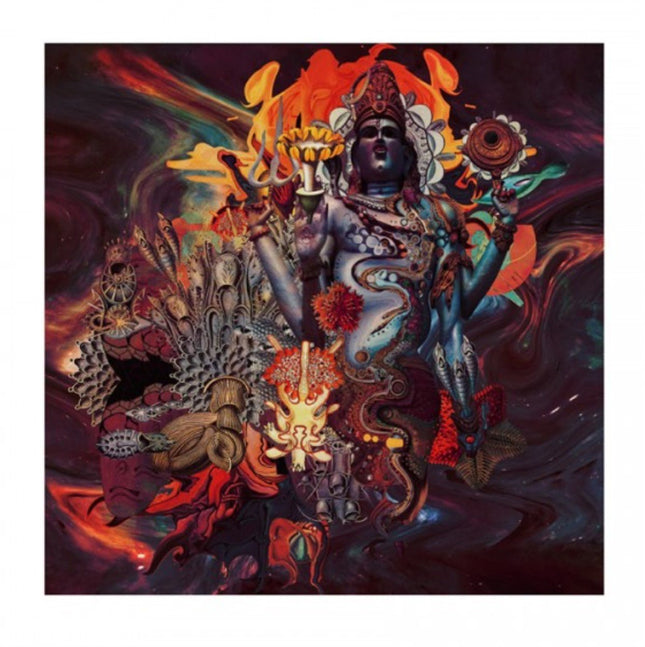
Luis Toledo El Camino De La Creacion Archival Print by Luis Toledo
El Camino De La Creacion Limited Edition Archival Pigment Prints on 330gsm Fine Art Paper by Luis Toledo Graffiti Street Artist Modern Pop Art. "In the context of Hinduism, Shiva is one of the gods of the Tri-murti ('three-ways', the Hindu Trinity), which plays the role of destroyer god, along with Brahma (the creator god) and Vishnu (preserver god). For this piece I wanted to mix in the same work the Hindu religion with space and form a new cosmogony. " - Luis Toledo
$364.00
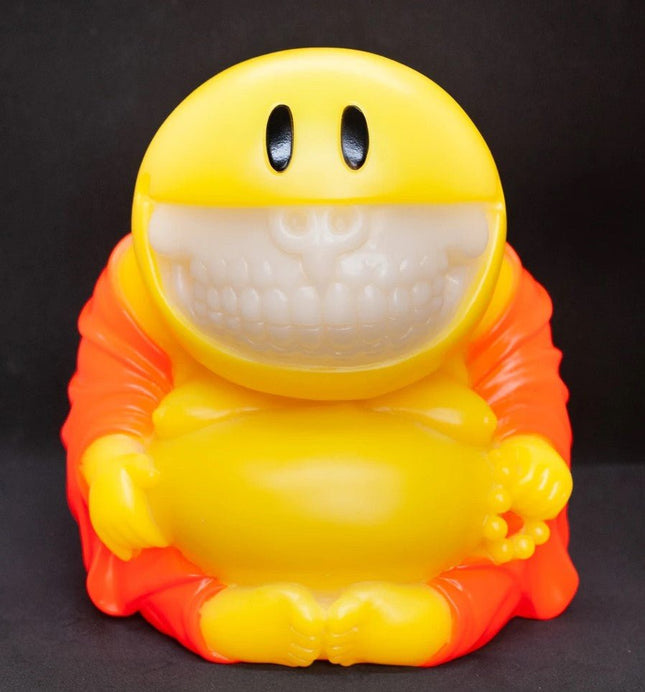
Ron English Mad Happy Monk Grin Orange Art Toy by Ron English
Mad Happy Monk Grin- Orange Limited Edition Blacklight Vinyl Art Toy Collectible Artwork by Street Graffiti Artist Ron English. 2019 Signed Limited Edition New In Box. Blacklight orange colorway of the Mad Happy Monk is 8 inches tall. Hand-signed by Ron
$242.00
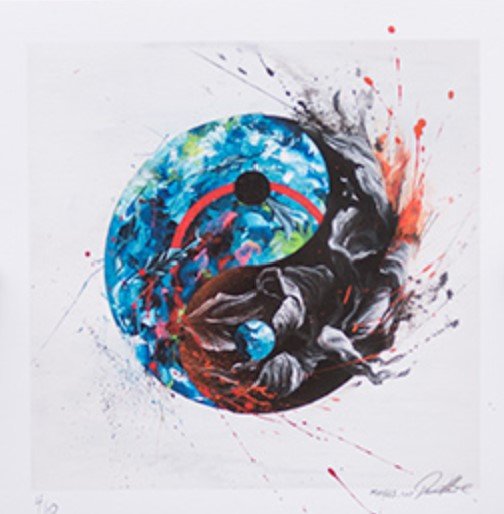
Meggs Search For Harmony HPM Archival Print by Meggs
Search For Harmony Limited Edition Hand-Embellished Archival Pigment Prints on 290gsm Moab Fine Art Paper by Meggs Graffiti Street Artist Modern Pop Art. Meggs cooperative practices have led to collaborations with various artists and brands from cultures worldwide. His commercial work with companies such as Nike, Stussy, Addict, New Balance, Burton, and Endeavor Snowboards has contributed to the constant evolution of his talent and furthering his range of designs and ideas.
$209.00
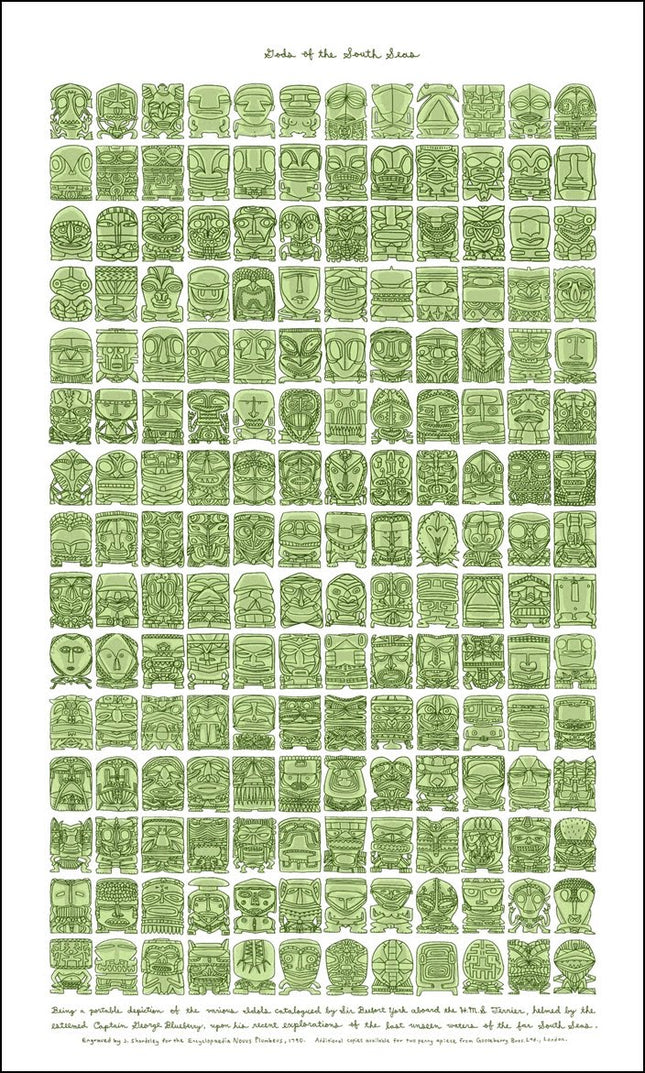
Jacob Borshard Gods of the South Seas Glow Silkscreen Print by Jacob Borshard
Gods of the South Seas Glow in the Dark Limited Edition 3-Color Hand-Pulled Silkscreen Print on Fine Art Paper by Jacob Borshard Graffiti Street Artist Modern Pop Art. 2010 Signed & Numbered Limited Edition of 50 Artwork Size 18x24 Jacob Borshard presents one hundred and eighty small Polynesian Gods. ‘Being a portable depiction of the various Idols catalogued by Sir Beebort York aboard the H.M.S. Terrier, helmed by the esteemed Captain George Blueberry, upon his recent explorations of the last unseen waters of the far South Seas. Engraved by J. Shardsley for the Encyclopaedia Novus Plumbeus, 1790. Additional copies available for two penny apiece from Gooseberry Bros. Ltd., London.’
$198.00
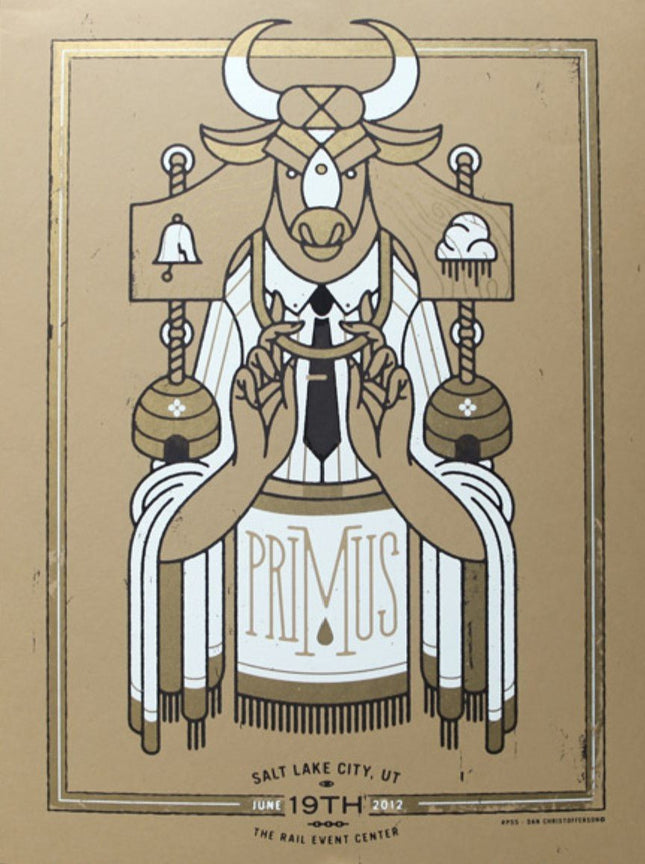
Dan Christofferson- Beeteeth Sacred Handshake With Beef Silkscreen Print by Dan Christofferson- Beeteeth
Sacred Handshake With Beef 3-Color Hand-Pulled Limited Edition Silkscreen Print on 80# French Dur-o-Tone Kraft Paper by Dan Christofferson- Beeteeth Rare Street Art Famous Pop Artwork Artist. 3-color, 18"x24" screenprint on 80#, French, Dur-o-Tone, kraft paper. I was invited to join in on Primus' 2012, spring tour poster series. The lineup is damn near impeccable, the posters themselves, amazing. -Dan Christofferson
$209.00
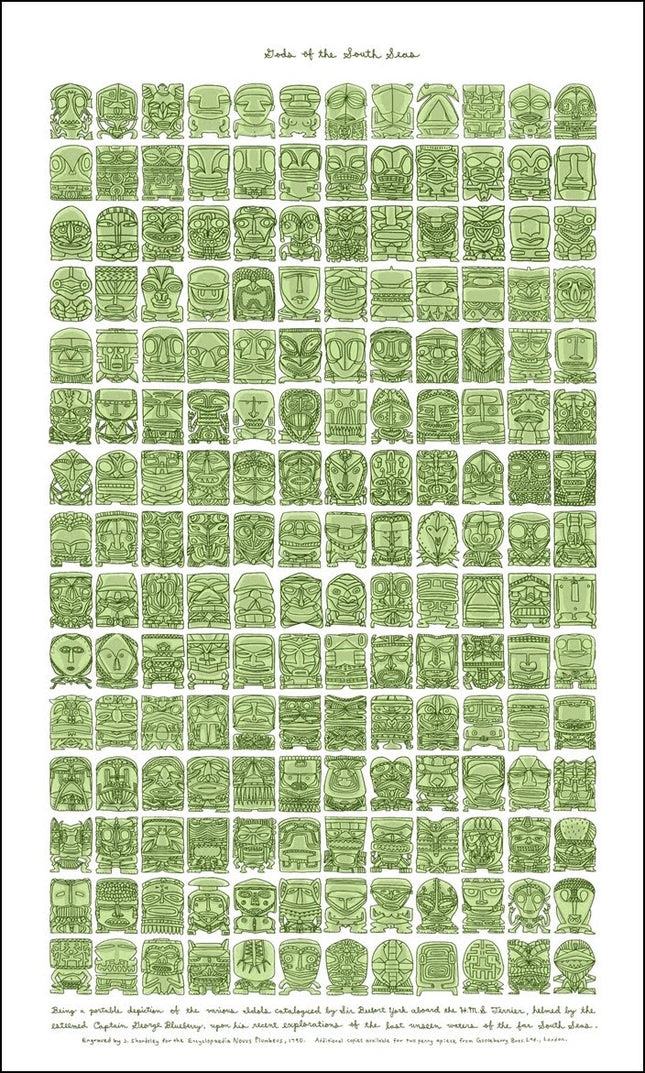
Jacob Borshard Gods of the South Seas Silkscreen Print by Jacob Borshard
Gods of the South Seas Limited Edition 3-Color Hand-Pulled Silkscreen Print on Fine Art Paper by Jacob Borshard Graffiti Street Artist Modern Pop Art. Jacob Borshard presents one hundred and eighty small Polynesian Gods. ‘Being a portable depiction of the various Idols catalogued by Sir Beebort York aboard the H.M.S. Terrier, helmed by the esteemed Captain George Blueberry, upon his recent explorations of the last unseen waters of the far South Seas. Engraved by J. Shardsley for the Encyclopaedia Novus Plumbeus, 1790. Additional copies available for two penny apiece from Gooseberry Bros. Ltd., London.’
$194.00
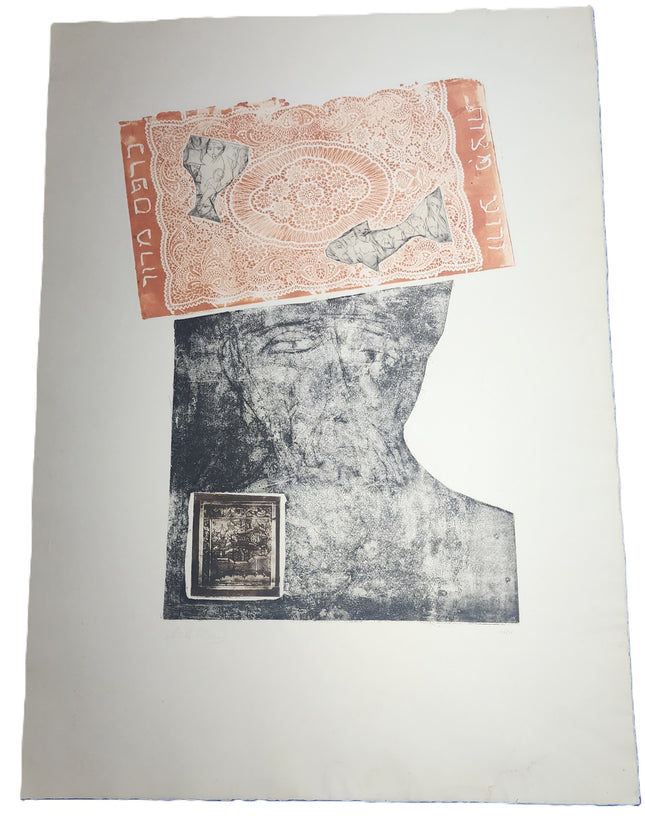
Zwy Milshtein Three-Piece Etching Aquatint Print by Zwy Milshtein
Three-Piece Etching Limited Edition Etching with Aquatint Print on Hand-Decorated Fine Art Paper by Zwy Milshtein is a pop art graffiti artist art. 1970 Signed & Numbered Limited Edition Etching Art Print. Artist: Zwy Milshtein Title: Three Piece Etching Medium: etching, with Aquatint Size: 21 x 30 inches Edition: Signed in pencil and marked 26/75 Zwy Milshtein: A Maestro of Etching and Aquatint Zwy Milshtein's artistic narrative is one of movement, not just across geographies but also through the evolution of his distinct style and technique. Born in 1934 in Kichinev, now known as Moldova, Milshtein's journey through the turbulence of World War II led him from Russia to Romania and eventually to Israel. However, in Paris, to which he moved in 1955, Milshtein found his enduring artistic home. Here, he became renowned as both a painter and a master engraver, celebrated for his etchings and engravings that capture the complexity of human experience. The Intertwining Paths of Engraving and Street Art The "Three-Piece Etching" by Milshtein is a testament to the craftsmanship and depth of engraving as an art form. Completed in 1970, this signed and numbered limited edition etching with aquatint, measuring 21 x 30 inches, is a fine example of Milshtein's adeptness with aquatint—a technique that allows for the creation of tonal effects, producing rich textures and a range of shades that lend a painterly quality to prints. This artwork, part of an exclusive series marked 26/75, is particularly notable for its abstract composition and the intriguing use of negative space, which engages the viewer in a visual dialogue reminiscent of contemporary street art and graffiti. Milshtein's Impact on Contemporary Art Milshtein's influence on the art world is well-documented through numerous exhibitions and retrospectives. His work was featured at ARC, the Museum of Modern Art in Paris, and in 1978, the Bibliotheque Nationale in Paris hosted a retrospective exhibition of his engravings. His artistic achievements include participation in the Hans Christian Andersen House project 1997, where he, along with other top European artists, paid tribute to the Danish author's bicentennial birthday. The aesthetic choices and technical skill displayed in works like "Three-Piece Etching" echo the visual strategies found in street pop art and graffiti. Milshtein's art, while distinct in its medium and execution, shares the spirit of innovation and subversion that is a hallmark of street art. His engravings invite the public to explore themes of identity, memory, and existence, much like street art and graffiti often do within the urban landscape. Zwy Milshtein's contributions to the world of engraving and his explorations in aquatint have secured his reputation as an artist of great skill and depth. "Three-Piece Etching" is a prime example of his ability to communicate complex ideas through printmaking. His legacy continues to inspire and influence artists within and beyond pop art, street art, and graffiti, affirming his artistry's enduring power and relevance.
$350.00
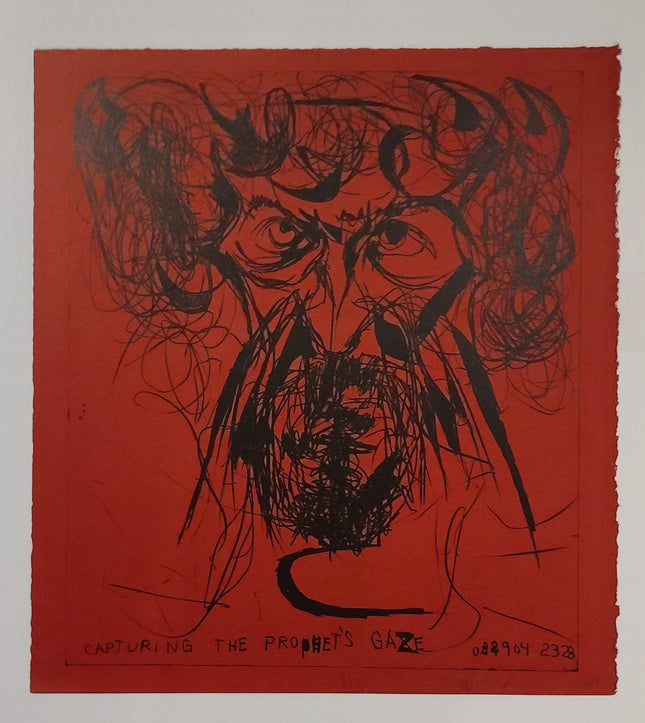
Jeff Rial Capturing The Prophets Gaze Silkscreen by Jeff Rial
Self Portrait IV 1-Color Hand-Pulled Limited Edition Silkscreen Print on Fine Art Paper by Jeff Rial Rare Street Art Famous Pop Artwork Artist. 12 Print Run Edition, on Hand Deckled Paper 2004.
$129.00
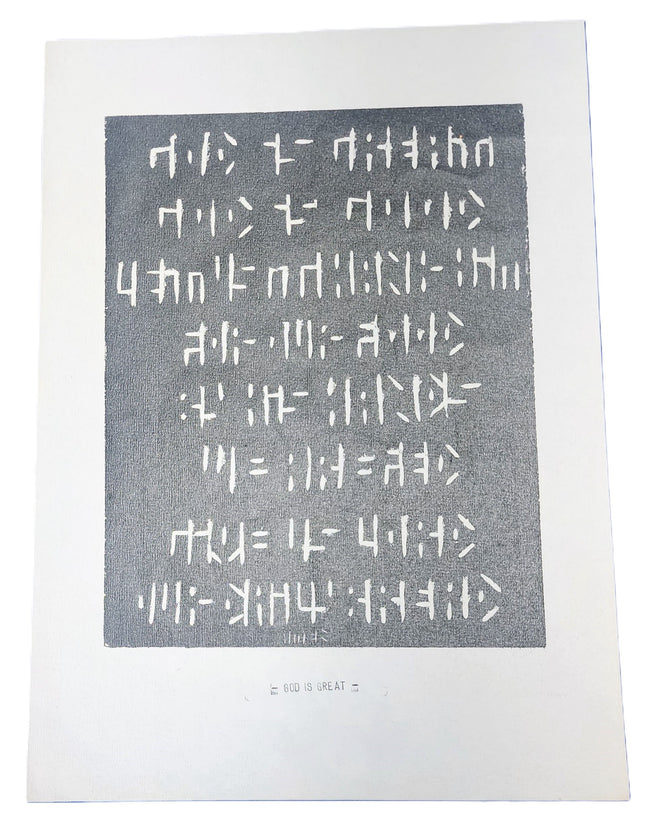
Other Artists God Is Great Script Woodblock Print by Unknown
God Is Great Script Woodblock Print by Unknown Hand-Pulled on Textured Fine Art Paper Limited Edition Artwork. 2008 Limited Edition Woodblock Woodcut Block Print Artwork Size 12x17 of Black & White Fictional Script Words from a St Louis Artist I Forgot the Name of. The Eloquent Silence of "God Is Great" Woodblock Print In visual art, few mediums speak as poignantly to the union of the ancient and the avant-garde as woodblock printing. The "God Is Great" woodblock print, a limited edition piece crafted in 2008, exemplifies the enduring relevance of this time-honored technique in modern artistic discourse. Although the creator from St. Louis remains unnamed, the artwork itself—a stark interplay of black and white fictional script on a textured fine art paper, size 12x17 inches—communicates a universal message that transcends the need for authorial identity. Woodblock Printing: A Dialogue Across Time Woodblock printing, one of the oldest methods of printmaking, has a storied history that stretches from ancient East Asia to contemporary art studios around the globe. The method involves carving an image into the surface of a block of wood, inking the surface, and then pressing it onto paper or fabric to create an impression. With its bold script and abstract composition, this particular piece reflects the technique's robust potential for precision and expression. The black and white color scheme of "God Is Great" reinforces the timeless nature of the print. At the same time, the enigmatic script suggests a language beyond words, an attempt to capture the inexpressible. With its minimalistic yet profound impact, this aesthetic finds echoes in the visual strategies of street pop art and graffiti, where the message is often condensed into symbols or stylized text that resonates with viewers on an instinctual level. Cultural Resonance in Contemporary Art "God Is Great" stands as an artifact of cultural resonance, embodying the essence of what many street artists and pop art practitioners aim to achieve—a piece that is accessible yet profound, immediate yet enduring. It prompts viewers to ponder the power of language, the act of communication, and the possibility of divine presence in the mundane. Despite the anonymity of its creator, the print carries a weight that speaks to the shared human quest for understanding and connection. This woodblock print's presence within pop art, street art, and graffiti is a testament to the fluid boundaries of art forms and the shared visual language that unites disparate genres. While the origin of "God Is Great" may be shrouded in mystery, the work becomes a vessel for contemplation and dialogue, inviting interpretation and engagement from those who encounter it. The "God Is Great" woodblock print, even without the renown of a known artist's signature, is a compelling testament to the power of traditional printmaking techniques in the contemporary artistic landscape. It reminds us that art, in its purest form, is a dialogue that spans history, transcends barriers, and continues to evolve, inviting each viewer to partake in its ongoing narrative.
$100.00










